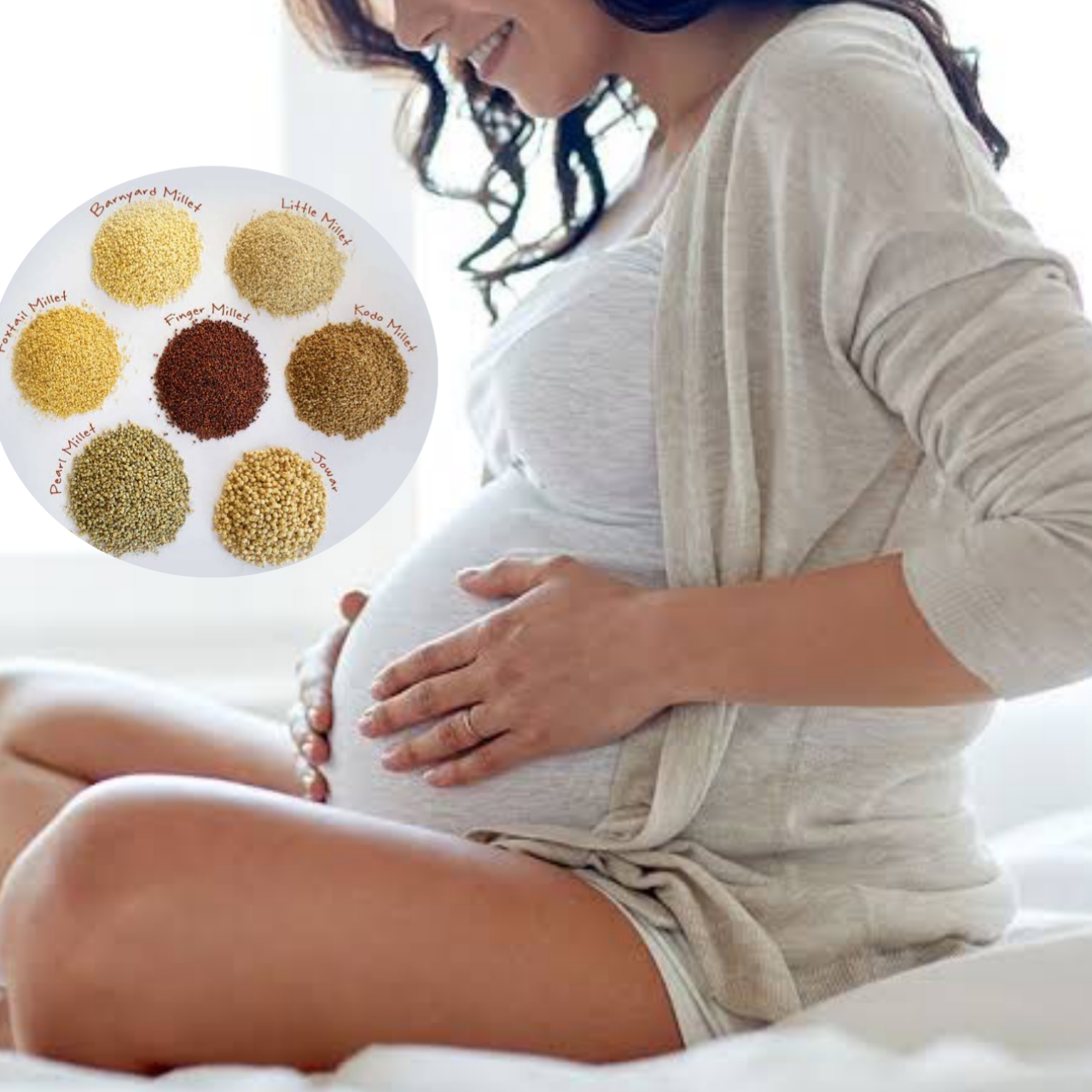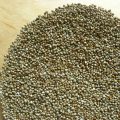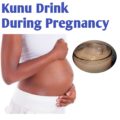Good nutrition is an important component of a healthy lifestyle and a healthy baby. The best time to review your nutritional status to make appropriate changes is prior to conception. A very important time of fetal development is during the first several weeks of pregnancy when many women may not even realize they are pregnant. The nutritional changes that should occur prior to pregnancy must be individualized based on your medical status, weight and eating habits.
Pregnancy is one time in life when weight gain is not only desirable, but also encouraged. Recommended weight gain may depend on a number of factors, including pre-pregnancy weight. You might also expect to gain more if you are carrying multiple babies. Your health care provider can help you determine what a reasonable weight gain is for you. The American Academy of Family Physicians is a good resource for even more information.
Many babies can weigh 7 lbs-8 lbs. before they’re born, so it’s easy to see how a weight gain of 25-30 lbs. is average. The USDA and AAFP are great resources to reference about weight gain during pregnancy, including a great toolkit from The Institute of Medicine.
The average weight gain may translate into an additional 200-300 calories/day. This increases the average daily caloric intake from 2100 calories per day to approximately 2400-2500 calories per day. The USDA My Plate is a great way to learn about healthy eating during pregnancy.
An increase in the serving size would be sufficient to satisfy the increased caloric needs. The increased caloric intake should not be made up by fatty foods, but rather with increases in protein, dairy, grains, fruits or vegetables. Eating healthy does not mean eating more, but rather eating right. Pregnancy requires more nutrients besides more calories. Food is divided into fats, protein and carbohydrates plus micronutrients.
What is Millet?
Millet is a group of small-seeded grasses, which is cultivated throughout the world, for human consumption. It is mainly grown in developing countries, but its ability to grow in relatively harsh, arid, and dry environments makes it a highly versatile crop.
Although there are different varieties of millet grown around the world, the most common cultivar is Pennisetum glaucum, also known as pearl millet. In terms of history, it likely originated in Africa but then spread throughout Asia and the Middle East roughly 10,000 years ago. India cultivates over 8 million tons of these grains every year, followed by Africa and China. It can be used as a traditional cereal, and can also be used in porridge, snacks, and other types of bread. Millet is a good source of carbohydrates and fiber, like other grains. Millet is also a good source of nutrients, vitamins, minerals, and organic compounds that can boost human health in various ways.
Health Benefits Of Millet During Pregnancy
Boost Blood Production
Millet is a rich source of iron. Iron is an essential element for blood production. Blood volume increases progressively during pregnancy until the last month. The volume of plasma increases 40-50 percent and red blood cell mass 20-30 percent, creating a need for increased iron and folic acid intake.
Your body uses iron to make extra blood (hemoglobin) for you and your baby during pregnancy. Iron also helps move oxygen from your lungs to the rest of your body — and to your baby’s. Getting enough iron can prevent a condition of too few red blood cells that can make you feel tired, called iron deficiency anemia. READ: List Of Nigerian Food To Eat During Pregnancy
Reduce The Risk Of Chronic Hypertension And Premature Labor
Researchers from the University of Kentucky have shown a link between whole grains and the prevention of heart disease risk. Millet can be one of the healthier grains to add to your diet if you want to protect your heart. It is a rich source of magnesium, which is an important mineral for reducing blood pressure and the risk of heart attack or stroke, particularly in the case of atherosclerosis. Deficiency in this mineral during pregnancy can increase the risk of chronic hypertension and premature labor. Preterm labor occurs when regular contractions result in the opening of your cervix after week 20 and before week 37 of pregnancy. Preterm labor can result in premature birth. Some studies suggest that supplementing with magnesium may reduce the risk of complications like fetal growth restriction and preterm birth.
Promotes Fluid Balance and minimize uneasiness
Millet is also a great source of potassium, which further keeps blood pressure low by acting as a vasodilator. Potassium works with sodium to maintain proper fluid balance in cells, which is ever-important during pregnancy. Now that your body is working for two, your fluid levels need to increase significantly.
Though a pregnant woman require almost same amount of potassium as a non-pregnant woman (4,700 mg per day), regular intake of potassium rich food should be increased as:
- The blood volume expands 50% during pregnancy. To keep the extra volume in right chemical balance, a little more electrolyte (sodium, potassium and chloride together) is needed
- Lots of potassium that is taken can be lost through vomiting associated with the morning sickness. To balance this, the intake should be increased slightly.
Taking adequate quantity of potassium in the diet of the pregnant woman will help to minimize uneasiness which are common during pregnancy like Leg cramps and swelling of ankles and feet.
Prevents Constipation
Constipation becomes a problem during pregnancy for around 50% of women and causes abdominal pain or discomfort, straining when passing a stool and infrequent bowel movements. Hormonal changes during pregnancy are thought to cause constipation by relaxing the muscles in the intestine. This serves to slow the movement of food through the digestive system and enable more time for nutrients to be absorbed into the bloodstream and delivered to the baby. However, it also allows more time for fluid to be removed, which can result in constipation.
The high fiber content of millet makes it an ideal food free bowel movement. Dietary fiber increases the weight and size of your stool and softens it. A bulky stool is easier to pass, decreasing your chance of constipation. If you have loose, watery stools, fiber may help to solidify the stool because it absorbs water and adds bulk to stool.
Lowers your risk of developing hemorrhoids
Hemorrhoids are swollen blood vessels in the rectal area. They range in size from as small as a bead to as large as nickel and can be inside or outside the rectum.”Pain and itching are the main symptoms. They usually worsen during bowel movements,” said Cathleen Harris, MD, an OB/Gyn on the HonorHealth medical staff. Hemorrhoids also tend to bleed. “Pregnancy hemorrhoids are no different than the ones you may experience when you’re not pregnant,” she noted.
According to the Office on Women’s Health (OWH), up to 50% of pregnant women develop hemorrhoids. According to an article in World of Gastroenterology, hemorrhoids are common during the third trimester. A high-fiber food like millet may lower your risk of developing hemorrhoids and small pouches in your colon (diverticular disease). Studies have also found that a high-fiber diet likely lowers the risk of colorectal cancer. Some fiber is fermented in the colon. Researchers are looking at how this may play a role in preventing diseases of the colon.
Diabetes Management
Gestational diabetes is a type of diabetes that is first seen in a pregnant woman who did not have diabetes before she was pregnant. Some women have more than one pregnancy affected by gestational diabetes. Gestational diabetes usually shows up in the middle of pregnancy. Doctors most often test for it between 24 and 28 weeks of pregnancy.
Often, gestational diabetes can be controlled through eating healthy foods and regular exercise. Sometimes a woman with gestational diabetes must also take insulin.
Millet, at its source, is a gluten-free whole grain. It is a good source of fiber and has a low glycemic index which has a positive effect in the fight against diabetes. Apart from these obvious benefits, a study published in the Frontiers in Plant Science journal also cites millets as a suitable dietary component to combat the growing prevalence of diabetes worldwide.
Detoxifies the Body
Millets are a rich source of phenols and antioxidants, according to a study by Dr. Linda Dykes, et al., Texas A &M University. Many of the antioxidants in millet can clean up toxins from your body. Quercetin, curcumin, ellagic acid, and various other beneficial catechins can help rid your system of any foreign agents and toxins by promoting proper excretion and neutralizing enzymatic activity in certain organs.
Reduce Risk Of Preeclampsia And Boost Baby Bone Development
Millets are not only comparable to major cereals with respect to their nutritional features but are very good sources of carbohydrates, micronutrients, and phytochemicals with nutraceutical properties. Finger millet contains the highest calcium content (300–350 mg/100 g) among the small millets’.
Millet can reduce your risk of preeclampsia, a serious medical condition that causes a sudden increase in blood pressure. Calcium also builds up your baby’s bones and teeth.
Prevents Birth Defects
Folic acid is a B vitamin found in millet that may help prevent certain birth defects. Before pregnancy, you need 400 mcg (micrograms) per day. During pregnancy and when breastfeeding, you need 600 mcg per day from foods or vitamins. Pearl millet contains high amounts of iron and folic acid. Folic acid (folate/vitamin B9) helps to reduce chances of neural tube defects such as spina bifida in the unborn child. Iron is responsible for preventing anemia in the mother. SEE Millet Health Benefits





